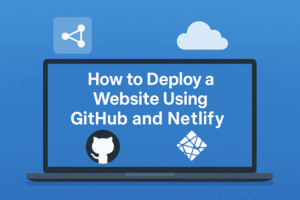In modern cloud computing, serverless architecture for backend developers has become a game-changer. It allows teams to focus on writing code while the cloud provider manages infrastructure and scaling. Understanding serverless architecture for backend developers is crucial for creating efficient, cost-effective systems.
What Is Serverless Architecture?
Despite the name, “serverless” doesn’t mean there are no servers. Instead, it means developers no longer need to manage servers directly. Cloud providers such as AWS Lambda, Google Cloud Functions, and Azure Functions handle provisioning, scaling, and infrastructure management automatically. You just write the code — and the platform takes care of the rest.
Serverless applications are typically event-driven, executing small, independent functions in response to events such as HTTP requests, file uploads, or database triggers.
Key Benefits
- No Infrastructure Management: Focus on your code, not servers.
- Scalability: Automatically scales up or down based on usage.
- Cost-Efficiency: You pay only for execution time, not idle resources.
- Faster Development: Simplified deployment and integration pipelines.
When to Use Serverless Architecture
Serverless is ideal for certain scenarios — but not all. Below are common use cases where it truly shines:
- APIs and Microservices: You can deploy individual functions as API endpoints, each responsible for a single task.
- Data Processing: Serverless excels at processing streams of data (e.g., AWS Lambda + Kinesis).
- Automation and Scheduled Tasks: Great for cron jobs or file conversions.
- Prototyping and MVPs: Reduce time-to-market without worrying about infrastructure.
- Event-Driven Systems: Ideal when your app reacts to specific triggers rather than running continuously.
When to Avoid It
- Long-Running Tasks: Functions have time limits (e.g., AWS Lambda’s 15-minute cap).
- High-Performance Workloads: Cold starts and latency can be issues.
- Complex State Management: Stateless functions can complicate session handling.
How to Implement Serverless in Practice
Let’s walk through a simple approach to adopting serverless architecture.
- Choose Your Provider: Start with AWS Lambda for general availability, or explore Google Cloud Functions for tighter integration with Google’s ecosystem.
- Define Your Functions: Break down your backend into smaller, independent units.
- Use an API Gateway: Tools like AWS API Gateway route requests to your Lambda functions.
- Manage State with Databases: Use DynamoDB, Firestore, or another managed database to persist data.
- Deploy with Frameworks: Tools such as Serverless Framework, AWS SAM, or Terraform make deployment and configuration easier.
Example:
// AWS Lambda example in Node.js
exports.handler = async (event) => {
const name = event.queryStringParameters?.name || "Developer";
return {
statusCode: 200,
body: JSON.stringify({ message: `Hello, ${name}!` }),
};
};
This simple function can be deployed within seconds and scales automatically — no servers to maintain, no downtime to worry about.
Best Practices
- Optimize Cold Starts: Use smaller packages and provisioned concurrency.
- Monitor Costs: Use tools like AWS CloudWatch or Lumigo to track function usage.
- Ensure Security: Implement IAM roles, environment variable encryption, and logging.
- Keep Functions Small: Each function should do one thing well.
Conclusion
Serverless architecture offers a compelling way for backend developers to build scalable, efficient, and cost-effective applications. However, it’s crucial to understand when to use it and how to structure your functions properly. For small to medium-sized workloads or event-driven applications, serverless is often the perfect fit.
As with any technology, success comes from thoughtful design — not hype. Start small, experiment, and gradually evolve your architecture to take full advantage of the serverless revolution.







